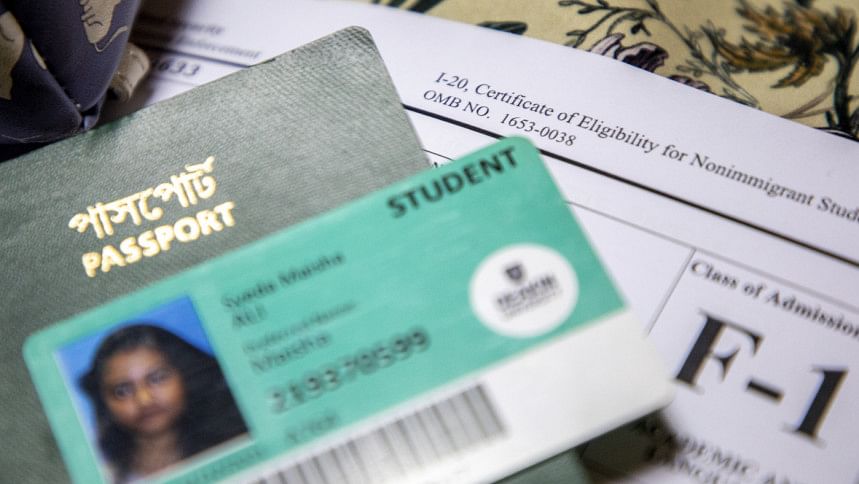Documents to carry when travelling as an international student

Being an international student comes with a plethora of restrictions and regulations. You're always being monitored by your programme to make sure you're upholding your visa requirements, which entails checking your travel plans as well. Remember that documents are your saving grace as an international student. From transcripts to money transfer receipts (personal, professional, or for tuition) to all forms of identification, documents are a must-have.
While you don't need to carry every receipt and all your grade sheets while travelling, you do need to carry three specific forms that verify your identity and your relationship with your institution to prevent being detained by customs.
Your I-20
When you get accepted into a university, one of the many forms you receive is your I-20, which is usually three pages long. The first page details your program including your majors, duration of study, your Student and Exchange Visitor Information System (SEVIS) ID (you'll need this ID to make a payment for your U.S visa), financial information and what kind of visa you'll need (it's commonly the F-1 visa). The second is where your school's international office will need to sign to allow you to travel internationally and the last page lists the conditions and instructions for your visa.
When you go through U.S. customs, the officer will ask to see your I-20 when you enter America. Keep in mind that it's unlikely you'll need this form if you're flying domestically, but it's always safe to keep on hand.
Before you travel abroad, you need to inform your school's international students' office. They place a signature on the second page that verifies you for international travel. More importantly, make sure this signature is in ink. In most cases, the office will send you a digital copy of your I-20 with a digital signature and that will create more problems. Secondly, make sure you fill out the student attestation section with blue ink on page one. It has to be blue. When you get your I-20, print it out and fill this section because it does require your parent's signature. Use this one form to get all your signatures. Lastly, memorise your major listed in the I-20 word to word. The customs officer might just quiz you and the last thing you want to do is to say it wrong, irritating an already-frustrated airport official. I learned this the hard way.
Your passport
From years of having your parents lock up your passport for safekeeping, you'll now have to carry it more often than you're used to. Most Americans use their driver's licence for identification even at airports. However, if you don't have a driver's licence (like myself), your passport is your proof of identification for travelling internationally and domestically. Unfortunately, your NID card will not do anything when you're asked for identification.
Additionally, your passport also has your student visa stamp. I prefer carrying my passport everywhere because I never know when I might need it but I'd advise against that. Losing a passport is a different headache all on its own.
Your university ID
My university ID card is the least asked for during my travels. It doesn't work much for identification since it only contains my name and student ID. Nevertheless, it's always in my wallet to verify my identification as a student. Plus, with a student ID you might be able to access benefits that are only for students.
At the end of the day, you want to avoid conflicts and having proof of your identity and schooling is crucial. Having a hard copy of these three things for international and domestic air travel is non-negotiable but if you're going for everyday things, it doesn't hurt to have a copy of these things on your phone. You can never be too careful and if you do mess up, learn from your mistake and add it to your list of experiences as an international student.

 For all latest news, follow The Daily Star's Google News channel.
For all latest news, follow The Daily Star's Google News channel. 








Comments